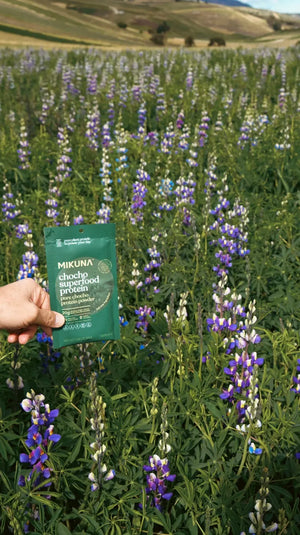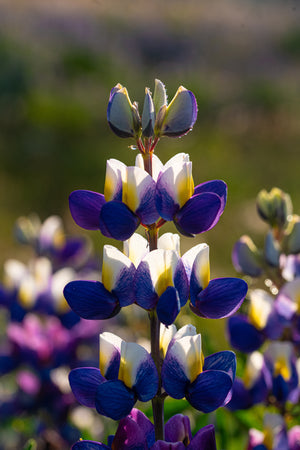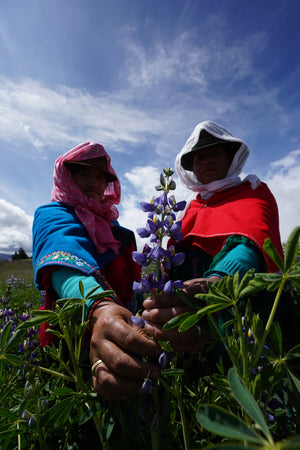
Key Features
- Scientific Name: Lupinus mutabilis Sweet
- Common Names: Chocho, tarwi, tauri, altramuz, Andean lupin
- Family: Fabaceae (legume family)
- Origin: Andean region (Peru, Ecuador, Bolivia)
- Uses: Food (seeds), soil enrichment
- Notable Traits: High protein and fiber content, nitrogen fixation, drought tolerance.

Plant Structure
- Height: 0.5–2.8 meters (1.6–9.2 feet), depending on genotype and environment
- Stem: Hollow, highly branched, often in a V-shape
- Leaves: Palmate, with 5–12 oval or lanceolate leaflets
- Flowers: Vibrant, ranging from blue to purple, in terminal racemes
- Pods: 5–12 cm long, containing 2–9 seeds
- Seeds: Bone-white, lenticulate to spherical, ~200g per thousand seeds
- Roots: Strong taproot up to 3 meters, with nitrogen-fixing nodules

Growth Cycle
- Duration: 150–360 days, varying by genotype and altitude
- Phenological Phases: Emergence, first true leaf, raceme formation, flowering, podding, pod ripening, physiological maturity
- Flowering Period: February–April in the Andes, symbolizing spring

Nutritional Composition (per 100g dry weight)
- Protein: 32–52%, comparable to or higher than soy
- Fat: 13–24%, rich in omega-3, -6, and -9 fatty acids
- Fiber: ~24%, aiding digestion
- Carbohydrates: ~24%, low in starch but high in oligosaccharides
- Minerals: Calcium (equivalent to a glass of milk), iron, magnesium, potassium, zinc
- Vitamins: B12, alpha- and gamma-tocopherol
- Energy: ~2307 kJ/100g

User Benefits
- High Protein: Complete amino acid profile, though low in sulfur amino acids (mix with quinoa for balance)
- Low Glycemic Index: Supports blood sugar control
- Antioxidants: Ethanol-extracted oils contain phenolic compounds
- Heart Health: Omega fatty acids promote cardiovascular health
- Bone Health: High calcium content supports strong bones

Sustainability and Global Potential
Chocho is a regenerative crop with significant environmental benefits:
- Nitrogen Fixation: Adds 60–140 kg/ha of nitrogen, improving soil fertility
- Drought Tolerance: Thrives in low-water conditions
- Low Input: Grows in marginal soils without heavy fertilizers
- Pest Resistance: Alkaloids deter pests, reducing pesticide use
Its high protein and oil content make it a promising alternative to soy in plant-based food systems, especially in colder climates where soy struggles. Breeding programs in Ecuador, Peru, and Bolivia have developed low-alkaloid cultivars like Iniap-450 (Andino) and Iniap-451 (Guaranguito), enhancing its commercial viability.




